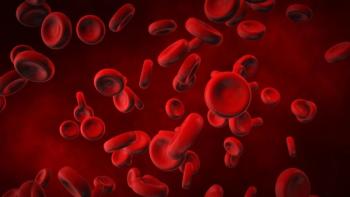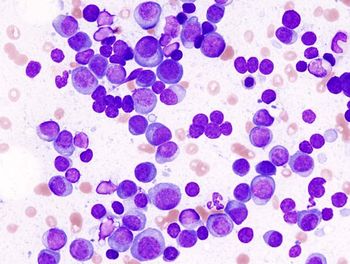
Older Soft-Tissue Sarcoma Patients Derive More Benefit From Radiotherapy
Older soft-tissue sarcoma patients undergoing surgery derive greater benefit from radiotherapy than younger patients, according to a surprising analysis of more than 15,000 individuals.
Older soft-tissue sarcoma (STS) patients undergoing surgery derive greater benefit from radiotherapy (RT) than younger patients, according to a surprising analysis of more than 15,000 individuals.
“Recent studies have been looking at the ability of radiation to activate the immune system, and since age affects the activity of the immune system, we hypothesized that the impact of radiation on STS survival would vary by age,” said study lead author Robert J. Canter, MD, of the University of California, Davis, in an email.
The new study analyzed results of 15,380 STS patients in the Surveillance, Epidemiology, and End Results (SEER) Program; the mean age of patients was 56.6 years, and 33.6% were at least 65 years old. Results were
Most of the patients (59.9%) were treated with surgery alone, and 40.1% were treated with either neoadjuvant (6.8%) or adjuvant RT (33.3%). The proportion of patients treated with RT increased over time, from 35.6% in the 1990–1996 period up to 40.1% in the 2007–2011 period. Patients 65 years or older were more likely to be treated with surgery alone (61.4% vs 59.1%; P < .01). The patients were stratified by disease subtype, and 9 out of 12 histologic subtypes showed an improved overall survival with RT compared with surgery alone.
For several histologic subtypes, RT was associated with improved overall survival only in older patients and not in those below the age of 65. For leiomyosarcoma, the hazard ratio (HR) with RT was 0.94 (95% CI, 0.84–1.05; P = .29) for younger patients; for older patients, the HR was 0.84 (95% CI, 0.71–0.99; P = .04). For rhabdomyosarcoma, the HR among younger patients was 0.72 (95% CI, 0.44–1.20; P = .21), and among those 65 or older the HR was 0.23 (95% CI, 0.05–0.57; P < .001). Similar results were seen in several other subtypes, and disease-specific survival also showed greater improvement in certain subtypes among older patients.
“We were somewhat surprised by these findings because our hypothesis was that younger patients would respond better,” Canter said. The authors noted several limitations to the study, including a lack of data in the SEER database on surgical margin status and chemotherapy administration. There is also a chance that RT was “preferentially implemented” among healthier older patients, though this would likely have been similar among younger patients and probably can’t explain the increase in benefit.
“While implementation of RT may seem more challenging in the elderly population, our data suggest that this approach deserves greater attention,” the authors concluded.
Newsletter
Stay up to date on recent advances in the multidisciplinary approach to cancer.

















































































